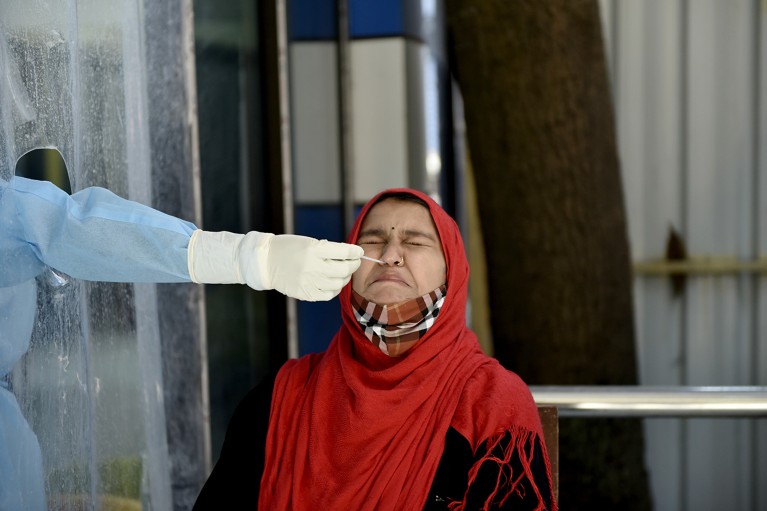Daily testing at a university has revealed huge discrepancies in the infectiousness of people who test positive for SARS-CoV-2. This large variation could help to explain why superspreading events — in which a few individuals infect many others — have a prominent role in the spread of the coronavirus1.
Between late 2020 and early 2021, when Alpha and earlier variants dominated, Christopher Brooke at the University of Illinois at Urbana–Champaign in Urbana and his colleagues identified 60 unvaccinated people at the university who tested positive for SARS-CoV-2. The researchers collected samples from the participants, who had either mild or no symptoms, every day for up to two weeks.
The researchers found substantial differences in the number of days for which the participants shed virus capable of infection: one participant excreted viable virus from their nose for nine days, whereas nine participants showed no detectable levels of infectious virus throughout the testing period. Modelling estimated that the most-infectious people shed more than 57 times more virus over the course of infection than did the least-infectious individuals.
Levels of viral RNA peaked several days earlier in saliva than in nasal samples, and became undetectable two to three weeks later.




